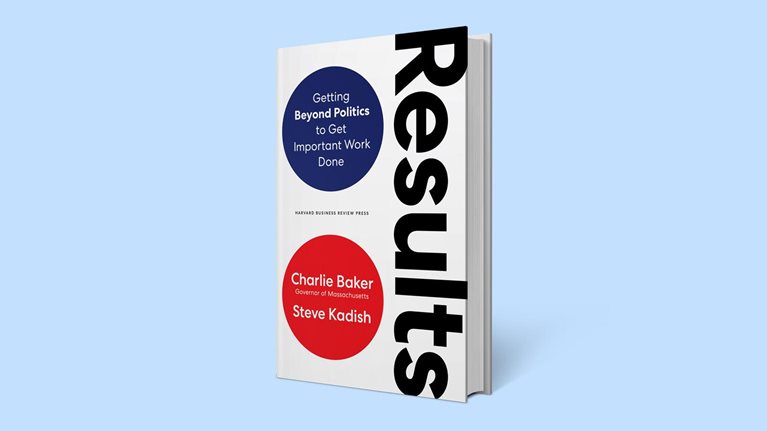For all the talk of the need for more women in tech, data suggests that meaningfully moving the needle requires better innovation. Thirty-five years ago, women earned roughly a third of computer science degrees. By 2016, that share had fallen to less than 20 percent. Although that number appears to have marked the bottom—in 2021 women were earning 22 percent1 of computing degrees—closing the gender gap in tech, especially for women of color, still has a long way to go.
But Judith Spitz has landed on a promising approach to accelerate progress. After 30 years at Verizon, where she rose through the ranks to become its chief information officer, she left in 2016 to oversee a City University of New York initiative that led to a 94 percent increase in undergraduate women enrolled in computer science classes. In 2020, she built on that success by founding Break Through Tech, a nonprofit housed at Cornell Tech, which works with academia and industry to get more undergraduate women2 into computer science and connect them with companies that might not otherwise find them.
Spitz recently sat down with Sarah Gitlin, an associate partner in McKinsey’s Washington, DC, office, to talk about one of Break Through Tech’s foundational programs—“Sprinternships”—and how it is helping to launch undergraduate women from underrepresented backgrounds into tech careers.
This interview has been edited for clarity and brevity.
Sarah Gitlin: When you founded Break Through Tech in 2020, what was your North Star?
Judith Spitz: We had two. Number one, I believed then—and I believe now—that every student should be exposed to computer science in their undergraduate years. This should be considered basic literacy in the digital age. You may never write a line of code, but you are certainly going to be impacted by people who do, working with people who do, and trying to conceive of solutions that require writing code. I believed, and research shows, that if you teach that introductory class in a way that’s inclusive and more mission-driven—learning how to write code to solve a problem that we’re passionate about, as opposed to an end unto itself—significantly more of the 58 percent of the undergraduate population who are women will be interested in studying computer science.
Second, we wanted to open the floodgates between the incredible talent pool of undergraduate women who go to non–top-ranked schools and all the companies, large and small, that say they’re looking for them. These companies say they want more women; Black, Latina, and Native American women; first-generation college students; and students from low-income households. They want them, but they’re looking in the wrong places—because the vast majority of those women are going to schools other than the ones that most companies are recruiting from.
Sarah Gitlin: How did you get started on the first of those North Stars?
Judith Spitz: We found that women coming into these undergraduate schools weren’t necessarily looking for computer science classes—because nobody had coached them or told them that this was a real possibility for them. So, we created something called “The Guild.” It was a program for entering freshman and rising sophomores who hadn’t yet chosen a major. The goal was to get them interested in taking that first class, by teaching them enough code to get them excited and having them work on a real-world project with company advisers to give them a sense of empowerment from solving a real problem.
We discovered that magic happens when you get company advisers together with these students. It was eye-opening on both sides. The students were incredibly excited to see how they could use this technology to do real things. And the companies were completely blown away by these students—because they don’t normally see them.
Sarah Gitlin: Beyond those company advisers, what else did you do on the second North Star? How did you build a bridge between company recruiters and women studying computer science at schools that aren’t top-ranked?
Judith Spitz: We wanted to connect our students to paid summer internships. All the research shows that the single largest predictor of a student landing a job within six months of graduating is whether they had a paid tech internship. We sent résumés to companies, but fewer than 4 percent of those students were offered a summer internship. When we went back to the companies, they said, “Look, these students have nothing on their résumés. They didn’t participate in hackathons on the weekends. They don’t have apprenticeships.”
What it boiled down to is that all those things are the result of the “privilege of free time,” when you’re not working one or more jobs as you go through college to support yourself, sometimes to support your family. In essence, the companies were looking for things on résumés that were more attributes of privilege than they were of potential. So, we literally sat down with some industry partners and we said, “How are we going to crack this nut?” And from those discussions, we landed on “Sprinternships.”
… the companies were looking for things on résumés that were more attributes of privilege than they were of potential.
Sarah Gitlin: How exactly do “Sprinternships” work?
Judith Spitz: Think “sprint.” It’s a three-week, paid (by the companies) microinternship that’s designed to create an experience that gives these students a résumé credential that will make them competitive when they apply for regular summer internships. There are two programs a year—one in January and one in May—during an academic break.
It’s not a substitute for an internship. Think of it as a preinternship that gives our students some “résumé juice.” It gives them a project and experience they can talk about when they apply for a summer internship. And it also gives them confidence.
Sarah Gitlin: How has the program evolved?
Judith Spitz: There’s some secret sauce that we have iterated on since we launched the program. First, we put the students into a host company in a cohort together, rather than one student at a time. We do that because they’re not ready to work by themselves and because there’s power in numbers. They do better as a group. It’s also easier for the companies. It’s much easier for them to say, “OK, the five of you go off into that conference room and work on this project,” than it is to come up with a challenge project that can be done alone.
Students are not interviewed. They’re matched with companies—because it would take companies longer to interview them than [the students] would be there, and because we know that there’s interview bias. We also prep the students beforehand, to make sure they’re ready to walk in the door and hit the ground running, whether it’s virtual or otherwise.
We did a pilot the first year, placing five students in one company. At the end of the three weeks, [the company] offered all five a summer internship. And we thought, “OK, we’re onto something here.”
Sarah Gitlin: What kind of results have you seen as the program has scaled?
Judith Spitz: We’re now running the program in four cities. Over 150 companies have participated to date, and the results are consistent. About 60 percent of the Sprinterns land a paid summer tech internship.
Sarah Gitlin: So, it’s gone from 4 percent before the Sprinternships to 60 percent?
Judith Spitz: Correct. And there’s more. This past year, 80 percent of the Sprinterns who applied for a summer internship at their host company received an offer. There’s no recruitment event, no job fair, no conference companies can go to where they get to interview somebody for five minutes and have that kind of return on investment, in terms of meeting a student, making an offer, and having the student accept the offer. The flip side of it is that about 64 percent of our students who get offers get an offer someplace other than their Sprinternship host—which says to me they’ve got a hugely valuable résumé credential they can shop around.
Sarah Gitlin: What kind of feedback have you gotten from the employers who participate in Sprinternships?
Judith Spitz: The feedback is almost universally consistent. They are incredibly surprised by what these students can accomplish in three weeks, and they think they’re terrific. Without the Sprinternship, the employers would simply never meet these students. This is the problem we’re solving. The best estimates show that more than 90 percent of women studying computer science in this country—and 97 percent of Black, Latina, and Native American women studying computer science—are going to colleges other than the top 25. They are spread out all over the country, and it’s not economical for industry recruiters to try and recruit from hundreds, if not thousands, of different colleges.
Without the Sprinternship, the employers would simply never meet these students.
Sarah Gitlin: What are the demographics of the participants in the Sprinternship program?
Judith Spitz: There is a small percentage of men in the program, from underrepresented communities in tech. But between 90 and 94 percent of them are women.3 Sixty to 70 percent of them are from underrepresented communities, which we define as Black, Latina, and Native American, or first-generation college students, or students from low-income households.
Sarah Gitlin: How many students have gone through Sprinternships at this point?
Judith Spitz: Just over 1,500. But we are starting to make a pivot now. We have a company that’s taking 100 Sprinterns this year because they are positioning this program as a strategic part of their tech-talent recruitment plan. They know how many interns they want, and they know how many Sprinterns it’ll take to get the pull-through into their hiring process. And we’re expecting to scale up from there once we go to what we call a “direct-to-student” model.
Sarah Gitlin: How does that model work?
Judith Spitz: As an example, we had spots for about 50 Sprinterns for one of our companies in a geography where we don’t have a specific university partnership. We put out minimal direct marketing, calling all interested students, and we got 250 applications for it. So, we filled 50 spots with virtually no marketing.
We know that this thing can and will scale. And that’s also part of my heritage. You grow up at a company like Verizon, and you do everything at scale. We think this is a programmatic intervention that isn’t just for a few companies and isn’t targeted at just a few schools. It can scale across the industry and enable systemic change in how companies recruit diverse tech talent.
We know that this thing can and will scale.
Sarah Gitlin: Could you ever see a Sprinternship model applying beyond tech?
Judith Spitz: Absolutely. The City University of New York, which is the first place we started, is very interested in doing just that. You need the right ground elements to make this work, which means it would have to be an industry that’s having persistent diversity problems. What this is solving for is an industry where there’s what I call a “feeding frenzy” at a small number of schools and an unwillingness or an inability to tap into talent outside of that.
Sarah Gitlin: Turning to a slightly less rosy topic … as we know, tech talent was in short supply, and now we’re seeing a wave of layoffs. Are you considering any changes to the Sprinternship program to adapt to these shifting labor market dynamics?
Judith Spitz: Most of the announced layoffs are by the companies often called “Big Tech.” But those are not the only companies that have really outstanding tech organizations with great career opportunities. I am a firm believer in the adage “Every company is a tech company.” And it doesn’t matter whether you’re talking about the Fortune 50, 100, 500 companies; they all have large tech organizations, and most are not overstaffed. There are still huge opportunities in all those other companies. These organizations have super-cool tech organizations that are doing really interesting things.
I am a firm believer in the adage ‘Every company is a tech company.’
Sarah Gitlin: Does Break Through Tech have other programs that complement Sprinternships?
Judith Spitz: We work with our partner universities on curriculum innovations, and to clear barriers students often face trying to get into computer science classes. There’s our Guild program, and Guild students often become Sprinterns. We also have a new program—Break Through Tech AI—that focuses specifically on underrepresented undergraduate women from institutions employers typically overlook, and who have a specific interest in machine learning and AI data science.
We asked our industry partners what they are looking for on student résumés for entry-level machine learning engineering jobs. And they said three things: they need to know some industry tools, they need to have a portfolio of things they’ve built, and they need the wherewithal to get through a tech interview. Most students who have those things are getting them outside a standard university curriculum. They are learning the industry tools on their own. They’re getting portfolio projects during their free time because they have a connection, and they can work on something without getting paid. And of course, those experiences give them the training and confidence to get through an interview.
So, we created this program that has those three elements. We give participants a stipend to attend a nine-week summer course specifically focused on machine learning industry tools. Not theory—industry tools. Then in the fall, we match them to an industry machine learning project with an industry adviser. It’s like a Sprinternship program, only it’s done over the course of a semester. We have about 160 women in the program now. The target is 1,500 women a year.
Sarah Gitlin: What is next on the horizon for Break Through Tech?
Judith Spitz: Our big focus right now is how to scale even more. We’re not talking about a couple of thousand, but about tens of thousands. And we think the way to get to real scale is to have a direct-to-student model, where we can invite and welcome students who go to any university. So, the program will have to switch to being more hybrid.
We’re also trying to figure out how to pivot companies from thinking about this as a social-good engagement to a strategic solution to their diversity pipeline problem. Some companies are no longer requiring a college degree and, instead, are looking at skilled-based hiring or apprenticeships to try to diversify their numbers. And that’s good. But what they’re doing is going outside the higher education universe, and they are missing out on an incredible opportunity pool of amazing students who are doing exactly what society has told them to do. They’re getting their four-year degrees. They’re studying computer science. They’re doing everything the companies are saying they should. It’s just that they’re off the recruitment radar screen.
Sarah Gitlin: You’ve found a way to put them on the companies’ radar.
Judith Spitz: Exactly. What we want to do is help companies see that while “no college degree required” is one way to achieve diversity in your tech organization, there are about 170,000 women studying computing at 4-year institutions today. And more than 150,000 of them are going to schools that are off of many companies’ radar. This is an opportunity pool just waiting to be tapped.


